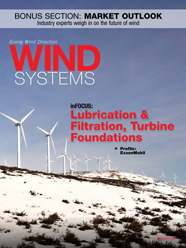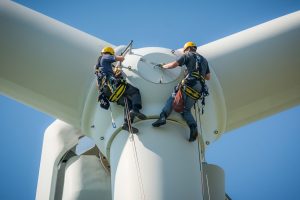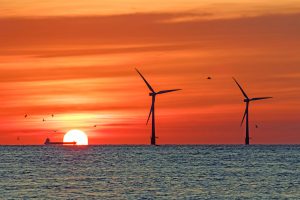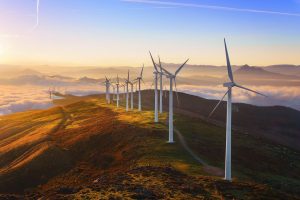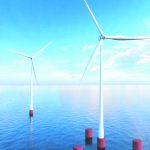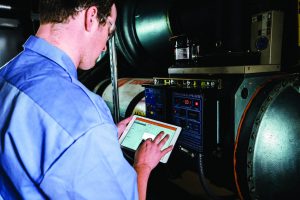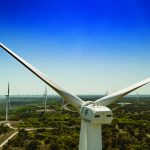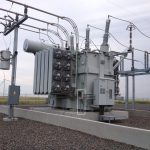Over the past few years, wind, solar, and natural gas have made up nearly all new electric generating capacity in the U.S. And earlier this year, wind energy surpassed conventional hydropower to become the country’s largest renewable resource, with enough installed to power 25 million homes.
But what about the years ahead? Will this American success story continue, bringing more low-cost clean energy to families and businesses across the country, while creating thousands of new well-paying jobs along the way?
A trio of new data points clearly show the answer to these questions is ‘yes.’
Encouraging News
New data from the second quarter of 2017 indicate the wind-energy development pipeline is bigger than ever. More than 25 GW of wind capacity are under construction or in the advanced stages of development — enough to power millions of homes.
From April through June, 5 GW of new wind started construction. Of that, 3 GW came from Wyoming’s Chokecherry and Sierra Madre wind farm. Once completed, it will be one of the world’s largest wind projects, satisfying demand for renewable energy across the western United States.
Fortune 500 companies also committed to powering more of their operations with wind during the second quarter. Notable buyers included T-Mobile, Goldman Sachs, General Mills, Apple, and Partners HealthCare. Long past the trend stage and now firmly entrenched as an important source of market demand, thirst from corporate buyers will play an important role in wind’s growth in the years to come.
Because wind’s costs have fallen by two-thirds over the last seven years, buying wind helps these businesses boost bottom lines while also helping to meet internal sustainability goals.
“This pursuit of renewable energy benefits our customers and communities through cleaner air while strengthening our business through lower and more stable energy costs,” said GM Chairman and CEO Mary Barra, speaking about her company’s 100-percent renewable goal.
Fortune 500 companies aren’t the only large energy users to recognize the benefits of wind, however. Fort Hood, one of the country’s largest military bases, began powering about half of its operations from a hybrid wind solar project earlier this year.
“We need to be autonomous,” said Chris Haug, a Fort Hood spokesman. “If the unfortunate thing happened and we were under attack or someone attacked our power grid, you’d certainly want Fort Hood to be able to respond.”
Finally, the U.S. continued to establish offshore wind as a new ocean energy resource during the second quarter.
The Maryland Public Service Commission greenlit two projects that put the state at the forefront of U.S. offshore wind development.
The commission approved offshore renewable energy credit (OREC) contracts for 368 MW of capacity spread across two projects, proposed by U.S. Wind and a subsidiary of Deepwater Wind. The move will allow the financing of both projects to move forward, and takes us one step closer to having a second American offshore wind farm, following Deepwater Wind’s groundbreaking Block Island project off the coast of Rhode Island.
Boom Years Ahead
Second quarter data confirm the earlier findings of a Navigant Consulting report: The U.S. wind industry will see strong growth through 2020.
American wind power will drive more than $85 billion in economic activity between 2017 and 2020, while wind-related employment will reach 248,000 jobs in 50 states. By 2020, Navigant expects 33,000 Americans will be working in wind-related factories, 114,000 Americans will be building, operating and maintaining wind turbines, and another 102,000 will have jobs supporting the industry.
Beyond job creation, wind’s growth will bring enormous economic development opportunities to rural America. Land lease payments for farmers and ranchers hosting wind turbines are expected to grow from $245 million a year to more than $350 million by 2020, according to Navigant.
And entire communities stand to benefit from increased revenue, not just landowners. Navigant forecasts that new wind farms built over the next four years will provide $8 billion in property-, income-, and sales-tax payments, on top of payments from the many projects already in existence.
As Washington continues to look for homegrown success stories it can promote, particularly ones hiring good-paying manufacturing jobs across the Rust Belt and investments in rural America, wind power clearly works for America.
Technology Gains
Bringing 1980s wind farms into the 21st century also offers another path for wind-energy progress.
American wind power was born in the Golden State, where the first large-scale wind farms were built three decades ago. Many still generate electricity today, more than 30 years later. But through a process known as repowering, companies are starting to replace vintage turbines with modern equipment.
Good examples of this process occurred during the second quarter of 2017. Salka LLC continues to repower the Summit wind farm in California’s Altamont Pass. Just 27 modern wind turbines will replace 569 first-generation machines.
NextEra Energy Resources just broke ground on a full repowering at the Golden Hills North wind farm, replacing 283 turbines from the ’80s with just 20 modern ones capable of generating significantly more electricity.
“(This) allows us to breathe new life into an old project, reduce the impact on the environment, and provide good jobs and meaningful economic benefits for the local economy,” said Daryl Hart, director of development for NextEra Energy Resources.
Other companies are repowering old California projects, too. EDF Renewable Energy recently upgraded the Shiloh IV wind farm, originally built in 1989. Just 50 new turbines replaced 235 old machines while quadrupling the project’s capacity to generate electricity.
Elsewhere in California, 21 modern turbines replaced 145 vintage machines at the San Gorgonio project in Riverside County in 2015.
Repowering helps these pioneering projects generate more electricity with increasing reliability and lower costs, all while significantly decreasing their environmental footprint. It also boosts the local economy.
“Repowering the Altamont Pass wind farm will have a profound impact on the Alameda County economy,” Salka chief executive Jiddu Tapia said. “Not only will the redevelopment process create local jobs, but the energy produced at the site will provide an affordable, dependable way for the east San Francisco Bay Area to meet its expanding power needs for generations to come.”
The forecast for American wind power remains strong, though, with wind staying on track to produce 10 percent of the country’s electricity by 2020. That means more jobs, low-cost electricity, and economic development. Any way you look at it, wind works for America.
















